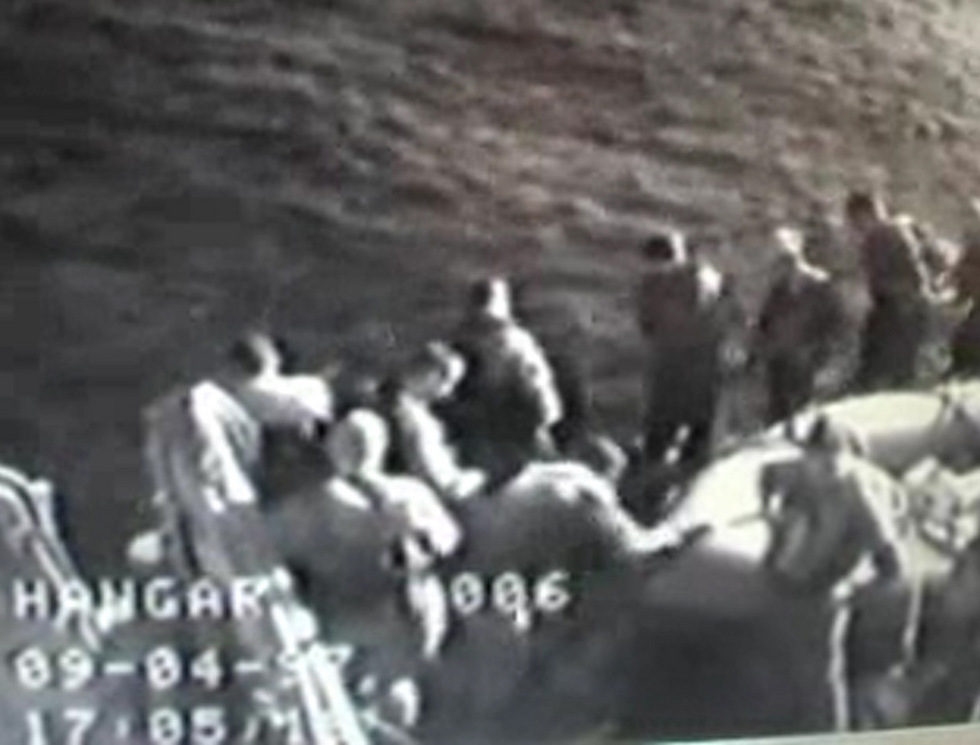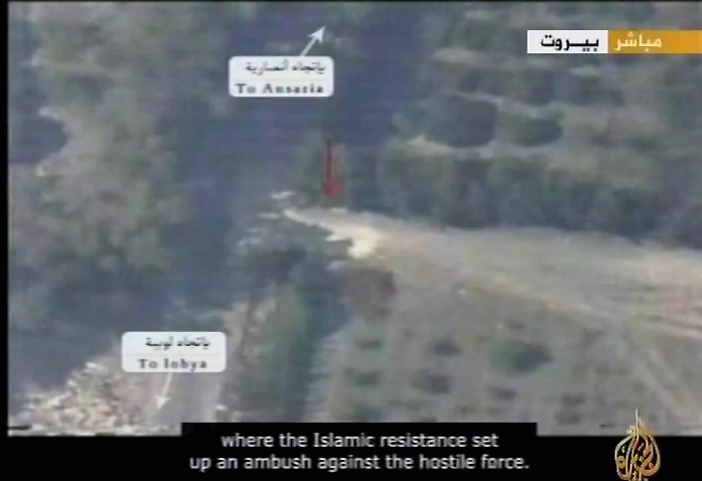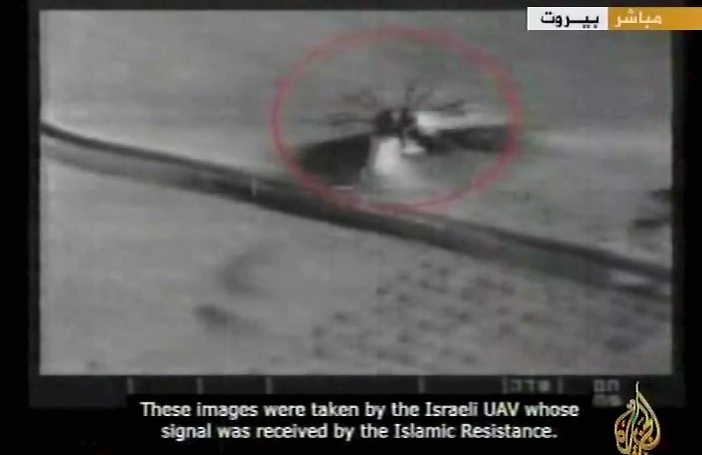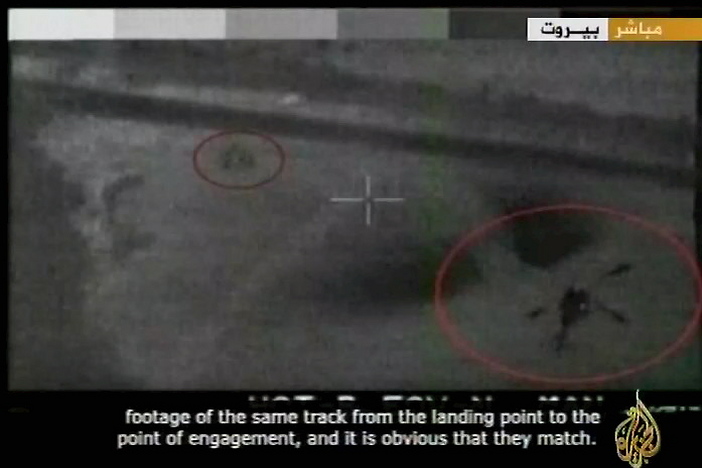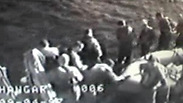

What really went wrong in botched 1997 Shayetet 13 operation?
20 years later, the IDF finally confirms Hezbollah was able to intercept intelligence while being transmitted from Israeli drone, giving it advance knowledge of naval commando operation deep inside Lebanon. The Shayetet 13 force was ambushed by the terror group, losing 11 soldiers.
This statement, made by a senior Israeli Navy official during a discussion held only days after the 1997 Shayetet 13 Disaster, ensured the traumatic incident did not get a thorough military investigation and has remained controversial to this very day, 20 years later.
Senior officers, particularly from the Military Intelligence Directorate (MID) and the Navy's operations division, got the hint and retained individual legal counsel.
When a military investigation is viewed as a criminal one, no one is looking for the operational truth to learn the lessons required, and everyone is looking for someone to blame.
In September 1997, a force of 16 soldiers from the elite naval commando unit Shayetet 13 was ambushed by fighters from local militant groups Hezbollah and Amal while on a mission deep in Lebanon. 11 of the commandos were killed in the firefight that ensued, including force commander Lt. Col. Yossi Korakin, as well as a doctor from a rescue force dispatched to their aid.
In a discussion at the MID on September 6, a day after the botched operation, the heads of the Research and Collection departments presented to then-MID head Moshe Ya'alon the reasons for the failure from their point of view. Ya'alon himself was not in Israel when the operation took place and was relying on the information presented to him after the fact.
Ya'alon concluded that the first explosion, which knocked the commandos to the ground, came from explosives carried by the Israeli soldiers themselves, thus decisively determining Hezbollah did not have advance information about the operation.
A battle ensued between the MID and the Navy. MID officials questioned the Navy's use of intelligence drones that scanned the area ahead of the operation. Furthermore, intelligence officials claimed that two days before the incident they provided the Navy with relevant intelligence material that pointed to a possible change in Hezbollah operations in the area, but the Navy did not give this information sufficient weight. Regardless, this information did not change the MID's version that the attack on the commandos was not planned in advance by the enemy.
This back-and-forth of accusations continues to this very day because the top military brass at the time did not "insist" on a professional, comprehensive and throughout military investigation.
Housing and Construction Minister Yoav Galant, who was one of Shayetet 13's beloved commanders, is infuriated by this. He considers this a distortion of the truth, an ongoing deceit of the bereaved families, a desecration of the memory of the fallen commandos, and a blemish upon the unit's reputation.
As far as Galant is concerned, there is no uncertainty—only clear and unequivocal facts presented in 2010 in the conclusions of the fourth and last IDF inquiry commission, led by Col. (res.) Kobi Agmon.
The commission's findings, revealed here for the first time, confirm the assertions made by the five surviving commandos in a documentary by Omri Assenheim aired on the investigative journalism TV show Uvda. The commandos deduced they haven't been told the whole truth about what happened that night.
Explosives were X-rayed
The incursion into Lebanon that night was part of a covert Shayetet 13 operation near the coastal town of Ansariya with the objective of planting two special IDF explosives in the area. This was a routine mission in southern Lebanon for the Shayetet, and there was nothing unusual about it, not even in the intelligence collection done in preparation for the operation. At the time, the Shayetet was preparing for two other operations, one of them far from Israel's borders, so the unit's commandos were training for different missions at the same time. Then-Navy commander Maj. Gen. (res.) Alex Tal even came to watch some of the training for that fateful mission.On the night of September 4–5, 1997, the Shayetet force landed on Lebanon's coast, north of the city of Tyre, and began making its way inland. About two hours prior to that, an Israeli Air Force surveillance aircraft accompanying the commando force spotted a vehicle parked on a road in an agricultural area, which was on the force's planned route.
The aircraft recorded the images rather than broadcast them to the force, but its pilots reported the sighting of the vehicle to the Navy command center in the Kirya IDF headquarters using an encrypted radio transmission. However, because the soldiers at the command center were not properly prepared for the operation, they marked the vehicle's location at a different place to what the pilot reported. The erroneous marking put the vehicle far from the force's area of operations, and it was therefore ignored. The force's commander on the ground, meanwhile, had no idea there even was a vehicle spotted.
An official in the Navy's intelligence department later claimed it was likely there was no connection between the explosives that went off in the ambush and the vehicle spotted in the area that night, pointing to the fact there was no reported sighting of people getting out of the vehicle.
Galant rejected that claim out of hand. "This kind of information has critical significance," he said. "I have led a lot of forces in many places. I, as a commander in the field, could make a series of decisions based on that information. But the information was not passed to the Shayetet commander, Col. Eli Glickman, or to the commander of the force, Lt. Col. Korakin. It's very grave that no one at the Navy headquarters took responsibility for this failure."
For the "negligence in preparing the command center's soldiers," four officers were reprimanded. Two of them opted to leave the army earlier than planned.
At the time, Galant was the commander of the Gaza Division. It was seven months after he finished his three-year tenure at the helm of Shayetet 13. He received the news of the botched operation at 1am, half an hour after the incident, from then-deputy Shayetet commander Erez Zuckerman. In the morning, Galant arrived at the Shayetet base in Atlit, where he met other Shayetet reservist officers who came to offer their help.
"I looked at the destroyed equipment that was put in a room near the commandos' dorms," Galant recalled. "The equipment was embedded with metal marbles. Based on pathological reports, similar marbles were also found in the fallen commandos' bodies. (Force commander) Yossi Korakin was killed from a marble that hit his forehead."
For some reason, part of the equipment that arrived with the wounded commandos to the hospital in Nahariya was destroyed.
Galant insisted the explosives the commandos were carrying did not have metal marbles, which contradicts the MID's claim that there was no enemy involvement in the incident.
The first inquiry commission headed by Maj. Gen. (res.) Gabi Ofir, which was appointed soon after the disaster, received X-rays of the explosives the commandos were carrying as well as their serial numbers. The X-rays were part of a routine safety procedure introduced by then-IDF chief of staff Amnon Lipkin-Shahak.
The commission's members also visited the explosives' production line and saw they were cast as one singular unit that cannot be affixed with marbles or other items. Furthermore, the tester at the production line not only ensures no one changes the composition of the explosive, but also accompanies it with the fighting units until the explosive crosses the border.
The commission concluded there was a strong likelihood "the commandos were hit by two enemy explosives ... the explosives the IDF force was carrying were standard and safe for use. The preparations for the operation were thorough."
Even so, the commission determined the commandos came upon the ambush by coincidence and that the ambush was not planned as a result of advanced intelligence Hezbollah obtained.
IDF chief Lipkin-Shahak did not settle for that and demanded the head of the Ordnance Corps, Brig. Gen. Michael Dayan, to present the findings of the investigation he carried out into the possibility the explosion of the bombs carried by commando Itamar Ilya was what caused most of the injuries. Dayan found the explosives Ilya carried were in order.
In August 1998, then-military advocate general Brig. Gen. Uri Shoham demanded an in-depth investigation into the possibility Hezbollah knew of the operation in advance, which could point to criminal negligence of those involved in its planning.
Following that, IDF chief Lipkin-Shahak formed a second inquiry commission, this time headed by former senior Military Intelligence official Brig. Gen. Gadi Zohar, to complete the work of the first commission on intelligence and explosives.
The second commission also clearly concluded that "based on the amount of explosions and the composition of the explosives that went off, it appears foreign explosives were involved. The explosives carried by the force were in order and did not include components similar to those that caused a decisive majority of the injuries among the commandos."
Despite this, the MID's version of events that determined no enemy explosives were involved in the incident—meaning, the commandos were injured and killed by the explosives they were carrying—remained commonplace and kept fanning the flames of conspiracy theories.
'They're like my children'
"I went to talk to the commandos and, since then, the matter won't let me rest," Galant said. "For weeks, I was a one-man investigative team. I saw all of the intelligence material. I spoke to anyone I could talk to who was involved in the incident. I looked into every line of inquiry possible. And even then, I reached conclusions of things the army officially released only many years later."I had fire in my belly. I trained these commandos. Some of the officers got their ranks from me. And I was the one who instructed them. I've been in dozens of missions with some of them, in the craziest places in the world. I've been in hundreds of missions with Korakin. In special operations units, the different ranks don't play a major part. You work closely with the commandos, you come in contact with them all the time: In the small boats, during special missions. I could identify a commando from afar based solely on his gait. You know who excels in the field of technology, who is better at piloting boats and who is stronger physically or mentally. They're like your children. And what has been done to them surrounding this incident won't let me rest."
"My conclusions were correct then, and they remain correct now," Minister Galant asserted. "As a result of irregularities in the intelligence collecting process for this operation, which was done in an insufficiently professional manner while also undermining the cover of secrecy, Hezbollah realized a naval commando force was supposed to arrive to a specific area during an estimated timeframe. In light of this realization, Hezbollah set up a sparse series of ambushes, with two or three people per ambush, in certain nights and certain times when arrival from sea is possible. Hezbollah realized a commando force would come from the sea within a timeframe of a week or two.
"The forces Hezbollah stationed for the ambushes were second-grade militants. These weren't its best fighters as the operation was deep inside Lebanon, beyond our frontline with Hezbollah. One of those ambushes was stationed in an area Hezbollah estimated had a high probability—based on the leak—the force will come through. The ambush heard and saw the force coming and set off from afar, at the same time, two small Claymore explosives that hit the main body of the force—11 commandos who were preparing to cross the road that was connecting the villages of Ansariya and Loubieh.
"The explosion, which happened 41 minutes after midnight, caused most of the casualties among the commandos. Five other commandos, who had already crossed the road, heard the explosion and turned around. Korakin, who was at the forefront of the main force, ordered the commandos to open fire toward the area they identified as where the attack originated.
"Fourteen seconds after the first explosion, another explosive was set off from inside an orchard. Korakin was killed. It was only three minutes and eight seconds later that the large explosive Itamar Ilya was carrying blew up. That explosion severed the nearby cypress trees. Shrapnel from that explosion was found in some of the commandos' bodies—alongside the metal marbles from the Hezbollah explosives. The explosive carried by Itamar Ilya could have gone off because of a variety of reasons that might have led to self-detonation: it could've been hit by one of the metal marbles, or the intense heat created by the fire raging on the ground (caused by the initial explosions).
"This version of events was pieced together based on photographing done (by the intelligence aircraft) in real time. It was MID personnel who analyzed them, which makes the determination made by senior officials in the intelligence collection department that there was no enemy involvement in the incident problematic. To this very day, it remains unclear why there was no proper investigation into the MID's conduct in this affair."
In the 20 years that have passed since, why did no one seek out the element in Lebanon who was involved in the incident to learn the truth?
"No one had an interest in knowing the whole truth."
Disagreements within the commission
The intelligence leak is one of the sensitive, major issues in this affair. The first inquiry commission raised the suspicion Hezbollah obtained some of the information from a double agent. But this suspicion was investigated by the Shin Bet and ruled out.In the weeks that preceded the operation, several drone sorties were conducted to collect intelligence and plan the commandos' route. While it was known the Israeli drones operating in the Lebanese skies at the time were broadcasting images on an unencrypted frequency, the belief at the time was that the drones' operating technique did not allow the enemy to know what is the mission the photographing was being done for. It worked for hundreds of missions, and no one even imagined it would be any different this time. Israel's intelligence agencies were unaware of the fact Hezbollah had a special unit monitoring the drones' activity.
In September 1997, the defense establishment only had two systems of encrypted drones at its service, which were broadcasting in black and white and used sparingly for special operations only. The Shayetet 13 operation was not considered one.
"In previous operations, we photographed out of the assumption that we were misleading the enemy in regard to the location of the target, that the enemy could not know if we were focusing on an orchard in Nabatieh or a house in Tyre," Galant explained. "In this case, the photographing was done continuously, along the coast, and when they reached a possible landing site the drones stopped there and scanned the route east back and forth, while zooming in on several critical points, such as the gate where the explosion occurred. Anyone with the ability to analyze these videos properly could not only figure out the entry route into Lebanon, but also certain points the force had to get to along this route."
The possibility Hezbollah might have intercepted the images broadcasted by the drone and identified the force's route was raised as a likely suspicion in all of the inquiry commissions.
The first commission pointed to the unencrypted drone transmissions as a potential cause of the leak but was unable to determine whether the transmissions did in fact leak.
The commission's main conclusion was that "there is high probability the operation was not exposed during preparations for the battle and during the execution." Meaning: The enemy set off the explosives as part of a chance ambush in the area.
Galant viewed that conclusion rather cynically. "A deserted agricultural area with no military facilities and no senior officials that need security, and Hezbollah just sets up ambushes there for no particular reason on the off chance that on a random day a commando force will land there?"
As far as Galant is concerned, there is no question about it: "The root of the failure is in the leak."
Reports that the Golani Brigade's Special Forces Battalion succeeded in planting explosives deep in Lebanon a month prior only served to further bolster the first commission's conclusions in the eyes of the public. Following the successful Golani operation, Hezbollah increased its operations away from the front line with Israel, setting up ambushes deep inside Lebanon.
Either way, the first commission's conclusions satisfied the top military and political echelons as well as the public. With the disaster viewed as a tragic incident, an act of fate, there were no conclusions to draw. And without any conclusions, there were no lessons learned.
There is one crucial detail, however, the first commission did not include in the public version of its report. The IDF knew that on September 4, 1997, while the Shayetet commandos were sailing toward Lebanon, Hezbollah went radio silent. The MID estimated at the time the decision had to do with the raised level of alert in Hezbollah, which was worried about Israeli retaliation for a terror attack in Jerusalem earlier in the day, which claimed the lives of three Israelis. No one even imagined the possibility Hezbollah raised the level of alert in the organization because of an intelligence leak. Radio silence normally means the enemy was waiting.
But the Shayetet commandos, who were already at sea on their way north, were not aware of Hezbollah's decision to go radio silent. When the IDF chief and the Navy commander decided to ignore the possible ramifications of the terror attack earlier in the day and go ahead with the operation, the commandos cheered.
The possibility of an intelligence leak from the drone became more concrete during the investigation conducted by the second inquiry commission. That commission concluded that if the unencrypted transmissions from the drone's sorties were intercepted, even in part, by Hezbollah, it would have been enough to expose the planned Shayetet operation.
"There is considerable likelihood the attack, in its essence, was planned in advance by Hezbollah, rather than being a random ambush set up in the area," the commission determined.
IDF chief Lipkin-Shahak did not accept the second commission's conclusions. This left the first commission's report—which determined the attack was the result of a random ambush—as the official, indisputable conclusion.
Lipkin-Shahak's term ended, and in January 1999 his successor Shaul Mofaz, at the demand of the military advocate general, appointed a third commission of inquiry to examine the question of a possible leak. It was led by Brig. Gen. (res.) Giora Zorea, the commander of the elite commando unit Sayeret Matkal and a former intelligence officer.
Two of the commission members determined Hezbollah had set up its ambush based solely on estimations, but without knowing the details of the Shayetet operation—the time, the manner of execution, or the planned route. The third commission member, an Air Force officer, determined the unencrypted drone transmissions likely leaked, making it easy for Hezbollah to learn the force's planned route. But the third officer's opinion was not adopted.
And so, the conclusions of the first commission remained the official version of events until August 9, 2010, when Hezbollah Secretary-General Hassan Nasrallah appeared on TV and revealed a video he claimed was intercepted by the organization from Israeli drone transmissions. Nasrallah also described how his men set up an ambush for the Shayetet force in Ansariya.
This led to an uproar in Israel. Then-IDF chief Gabi Ashkenazi instructed the Navy and the MID to form a fourth commission of inquiry to examine whether the videos Hezbollah released were authentic. The commission was headed by Col. (res.) Kobi Agmon, who was Shayetet 13's intelligence officer until two weeks before the operation in Ansariya and one of the top Navy intelligence officers.
The commission, which included seven representatives from all relevant bodies, went through drone footage archive from the time, analyzed the video released by Hezbollah, and found it was compiled of six different video clips edited together. The first five clips included footage from Lebanese TV, footage from Israeli TV, a commercial satellite image in color with the Shayetet force's route marked on it, images broadcasted by the intelligence aircraft the night of the attack and images transmitted by a drone at night and during the day. The last two clips were filmed during the commandos' rescue. These findings indicate that throughout the entire rescue operation, Hezbollah had a visual of what was happening on the ground, in contradiction with the MID's conclusions at the outset.
The "smoking gun" was in the sixth clip in Hezbollah's collage. It was day-time drone footage transmitted to a ground station in Israel on August 31, 1997—four days before the ambush. The clip is several minutes long.
"Originally, this was footage filmed by the drone for 30 minutes, which includes continuous and focused scan of the landing spot on the beach and of the planned route, including the area where the explosives went off," the commission determined.
It is safe to assume if Hezbollah was able to obtain this video, it also managed to intercept the 13 previous drone sorties conducted in preparation for the operation. So it is possible Hezbollah had over five hours of footage detailing the Shayetet commandos' planned route, including repeated footage of the areas the drone's camera focused on and footage from two sorties carried out after the one whose footage Hezbollah used in the video.
After the commission determined the video footage was authentic, it tried to investigative whether Hezbollah obtained it from an agent, or whether it was intercepted by the Syrians or Iranians who then gave it to Hezbollah. The conclusion was clear: "All of the examinations found the footage was intercepted in real time while the drone transmitted it. There is strong likelihood it was intercepted by Hezbollah independently."
"The Shayetet force's movement toward the location of the incident, as it is portrayed by Hezbollah (in the video), matches the route filmed by the drone," Galant said. "But in reality, Lt. Col. Korakin changed the route while on the move, including the landing spot on the beach and the route the commandos took, moving several hundred meters away. This was because the intelligence the force received was inaccurate, and the chosen route went through vegetation that would've slowed it down. However, the road where the explosions happened had to be crossed in each of the (route) possibilities."
The fourth commission's conclusion is the same as Galant's: The drone transmissions Hezbollah intercepted in real time were the intelligence basis to its preparations in the field.
The fourth commission concluded, "The precise timing of the operation was unknown, and it is likely the ambush was set up for several nights." Most of the hits the commandos suffered came from the front and from the right, which matches the direction of the force's movement vis-à-vis the first explosive to go off. The commission noted that "according to explosive experts, the lethal results further indicate the location of the explosives and the accurate and intentional direction they were aimed at clearly contradict the possibility the explosives were randomly planted."
Conclusions remain confidential
In fact, the fourth commission exceeded its purview. It didn't merely check the authenticity of the Hezbollah video but also formulated conclusions. The commission presented its conclusions to then-head of the Naval Intelligence Division, Brig. Gen. (res.) Yaron Levi, then-Navy commander Eliezer Marom, then-head of the Operations Directorate Yaakov Ayash, then-MID head Amos Yadlin and then-IDF chief Gabi Ashkenazi. They all accepted the conclusions without reservations, and the conclusions were then passed on to the families. Some received the report in person from Maj. Gen. Marom.After four commissions of inquiry, formed by three different IDF chiefs, the fourth commission's report became the IDF's official version. However, no one thought to inform the public of this change. In fact, the IDF's response to this article was the first time the army officially admitted the ambush on Shayetet 13 was planned.
"In 2010, a commission of inquiry was appointed by the head of the Naval Intelligence Division. The commission's conclusions were presented to then-Navy commander, Maj. Gen. Eli Marom, who approved its conclusions there is high probability the ambush was planned in advance," the IDF said.
The Shayetet dealt with the shockwaves from the disaster for a long time. It took two years for the elite unit to return to full military operations. The commanders wouldn't take any risks, the margin of safety in intelligence and operations did not allow for complex operations, and the IDF did not say a word. Not only did no one take responsibility for the fact the Shayetet was not functioning as it should, but it was allowed to torment itself and reduce its activity, even though this is a unit used most often in operations deep behind enemy lines in-between wars.
As time went on, new commanders in the Navy changed the methods of preparing intelligence and planning operations, the technology advanced, and drone transmissions became encrypted.
"There is the only area where lessons have not been not learned: The ethical area of conducting proper investigations," Galant said. "We saw the result of that in the Marmara (raid)."














